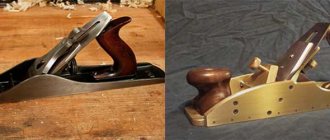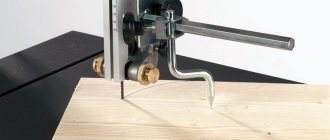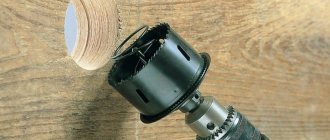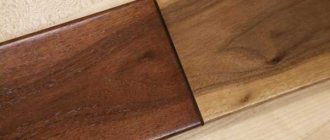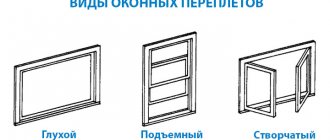What is the file for?
A file is a universal tool that is used for processing and cleaning metal parts. The design of the product is made in the form of a small block. A metal alloy is chosen for its manufacture.
Along the perimeter there are notches of different sizes and thicknesses. There is a shank at the end, thanks to which the handle is fixed. It can be made of plastic or wood.
Where is a file used? There are several areas in which this tool is used:
- Processing the edges of a metal workpiece. In the process, it is possible to achieve the required dimensions of the part;
- Removing rust, paint and dirt;
- Sharpening cutting edges;
- Grinding.
How does the tool work? To grind the metal part, the master applies slight force to the grooved part of the file. The teeth, which are located along the entire perimeter of the metal bar, are in contact with the surface being processed, thereby removing a thin layer of metal.
Files are produced taking into account the requirements of GOST 1465-59. For this purpose, it is envisaged to use a certain type of steel, which is used for different types of surfaces.
General characteristics of rasps
The rasp is used for processing wood, soft metals, and sheet finishing materials. It is recognized as universal and multi-purpose due to its practical use in a variety of technological processes and is considered one of the most popular carpentry files.
At the lowest possible physical cost, the rasp file guarantees the maximum level of productivity, which is crucial when working with hand-held carpentry tools.
Purpose
The rasp is mainly intended for filing. Filing is an operation to remove the top layer of material from the surface of a workpiece to further give the product the required shape, overall dimensions and the required degree of roughness. The use of this carpentry device ensures processing accuracy of up to 0.05 mm.
Filing is a labor-intensive process. But equipment used for its intended purpose will allow you to avoid defects during work and obtain a flat and clean surface of the product.
Device
From German, “rasp” is translated as “grater.” This definition exactly characterizes its main design feature - metal teeth resembling the working surface of a grater.
In Russia, the production of rasps is regulated by the state standard GOST-6876, adopted in 1979, which is still in force.
The rasp teeth are arranged in the direction of the long side and overlap each other. They are divided into rows and offset relative to each other along an axis along which special grooves are located.
Types of rasps
In accordance with GOST-6876-79, rasps are classified as:
- Flat: blunt-nosed, sharp-nosed, hoofed. Used for finishing convex and flat surfaces, which can be located both inside and outside a wooden product.
- Round and semicircular. Designed for filing concave surfaces and large diameter holes. Thanks to the rounded shape of the working part, it is also convenient for processing flat surfaces and oval holes.
- Shoemakers: straight, curved, double-sided and single-sided. Allows you to process products made of soft materials.
When processing wood, the first two types of tools are used. The semicircular rasp file is considered the most universal.
Technical features of the file
It is important to consider several requirements before purchasing a file. They are as follows:
- Product size. Tool parameters should be selected taking into account the area in which it will be used. For example, to process small iron areas, compact product models will be needed;
- Handle material. Plastic models slip in the hand when pressed for long periods of time. The wooden base is more pleasant to the touch;
- Tip material. For frequent use, it is recommended to select models whose working part is made of steel categories ШХ 15, 13Х, У10А;
- Notch size. The metal part can be made in the form of thin strips, thick ribs or alternating.
If you take these recommendations into account, you will be able to purchase a tool that will meet all the requirements. Compact and miniature products should not be used for processing large parts. To do this, the file size must be at least 15 cm.
How to restore an old file - combating corrosion
If you managed to find an old file from the times of the USSR, then there are probably traces of corrosion on the surface of the tool. The operation of such a tool will not be effective, since the size of the teeth decreases due to corrosion formations.
This tool does not need to be disposed of if its working parts (notches) do not show signs of complete wear. To remove traces of corrosion on a file, you must do the following:
- Pour water into the container (it is recommended to use warm water)
- Pour citric acid into the water, and the amount of it should be at least 50 grams to have a positive effect
- To stir thoroughly
- Dip the file to be restored into the resulting solution
- Wait at least 24 hours, then remove the tool, which has already been cleaned of corrosion.
As you can see, any good tool can be restored and continued to be used. A detailed description of file restoration is described in the video material.
Types of modern files
Today there are several types of products. They are divided into several groups depending on the following characteristics:
- A type of notch. They can be located along the entire perimeter of the metal bar or present in several parts of the tool;
- Product form. File models can be round, triangular, quadrangular;
- Application area.
Teeth size
In addition to the tooth size, products of this class differ from each other in the cutting density.
For rough surface treatment, products with large notches are used. It is called No. 1; there are from 5 to 15 teeth per centimeter. Its use makes it possible to remove a fairly thick layer of material in one pass, especially from soft materials; I call files of this type wrangler files.
Files No. 2 have from 14 to 25 grooves per centimeter of surface. This is perhaps the most popular type of this instrument. In fact, this file is most often used in practice.
Double cut file
Indeed, it can be used to process almost any material. But there is one subtlety: when working with soft metals or wood, after a fairly short time the notch will be clogged with processing waste. This is why it is necessary to clean the work surface with a wire brush.
Products with notches from 26 to 80 grooves per 1 centimeter are used for final surface treatment. After proper processing, there are practically no traces left on the surface.
Features of files
Hard types of metal materials are used to make files. The fact is that when exerting physical impact on the working surface, deformation of the product may occur.
The file is used for turning, milling, broaching and cutting parts of different sizes. In turn, they are divided into:
- Single. They are used to work with products that are made of soft metal, plastic or wood;
- Double. These product options have the shape of a triangle, rectangle or circle. The notches are applied at a certain angle, which allows you to quickly erase metal boundaries. Upon contact with a hard substrate, thin chips are formed. Such models are divided among themselves by the size of the teeth. There are 5 categories of files.
Experts recommend purchasing all models of products to carry out different types of work at home.
What is a file and why is it needed?
Structurally, a file is a very simple tool. It is a steel plate on which a notch is applied. The notch can have different depths and profiles, which determines the scope of application of the tool. During operation, it is held by a handle made of wood or various composite materials. A tool intended for rough (grinding) work may have two handles and externally resemble a familiar plane.
The purpose of the file is to remove a thin layer of wood, thereby leveling the surface of the workpiece and giving it the required shape. In principle, a grinding machine does all this, but it is extremely problematic to do delicate work with it.
Types of files
According to their purpose, files are divided into several types. These include:
- Manual. It can be used in any field of activity. Most often, this tool is chosen by mechanics and turners. On the surface of the metal bar there is a certain double-type notch. The selection of teeth should be carried out depending on the quality of the desired result;
- Special purpose models. They are chosen at industrial enterprises that produce parts of various sizes. With their help, you can quickly remove defects formed after the machine. They are of high quality;
- Needle files. This type belongs to a common group, which includes 10 subgroups of the instrument. They are divided according to shape and size. There is a circular notch along the perimeter of the model. The size of the notches varies from 1 to 5. This category of tool was developed for accurate and precise processing of small elements;
Rasps. The product is distinguished by its long length and the presence of large teeth along the perimeter of the metal bar. The verse is selected to create a rough draft.
It is necessary to select a tool taking into account its size, category, type and thickness of teeth.
The needle file and its functions
The needle file has a completely different purpose. It is used for precise and finishing machining of small parts. In production and in everyday life, there are very often situations when it is necessary to give a finished look to a metal product of complex shape, to turn or process a tiny part. This is where the needle file comes to the aid of the mechanic. This small, finely cut file can get into the most difficult to reach areas.
The shape of the working body of the needle file can be completely different. Experienced craftsmen prefer to have sets of several such files in their household, using them individually or sequentially, one after another. A double notch – main and auxiliary – helps needle files process parts effectively. The notch number is usually marked on the handle of the tool.
File shape
Today in special departments you can find files of different lengths and shapes.
They are divided into several types:
- Flat. Such models are considered classic. They are used to create grooves, holes and grooves;
- Triangular or triangular. Notches are used on the surface, applied at a certain angle;
- Square. They are chosen for creating complex holes;
- Round. They are designed for processing large holes;
- Diamond-shaped. Products of this shape are chosen for the consciousness of gears.
There are several factors to consider when choosing. They are as follows:
- The working surface material must be made of dense steel. The notches can be created in the form of a diamond coating. Thanks to this, it is possible to quickly grind iron workpieces;
- Product parameters. The length and width of the file should be selected taking into account the area of its application. For example, for miniature holes and grooves, it is better to choose models of compact sizes;
The size of the teeth is selected taking into account the type of processing. For example, files with large teeth are suitable for rough work that does not require precision.
What is better to buy
Analysis of sales of online stores showed that the following types of tools are popular in the market of goods and services:
- Flat – designed for processing flat surfaces, as well as areas with internal grooves and having maximum curvature parameters;
- Round – designed for processing rounded, ellipsoidal holes and cuts; wood files also smooth out the end part of the boards;
- Semicircular – universal tools, the configuration of which allows you to perform the work of a round and flat file on wood;
- Rhombic - designed for working with shaped surfaces that may look like gears, sprockets and other intricate parts;
- Triangular – wood files with three planes, designed for leveling different types of surfaces and making shaped cuts.
Advice! When buying wood files, pay attention to both the material used and the ease of holding the file. The tool should not slip out of your hands, be of an awkward shape or too heavy.


